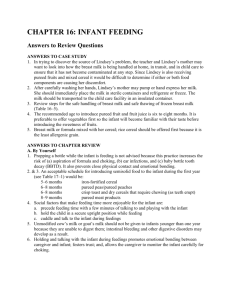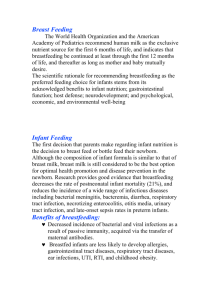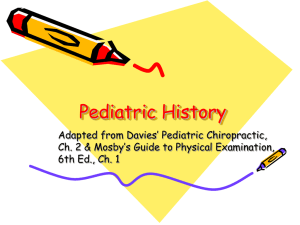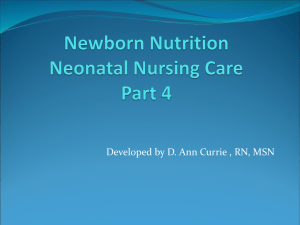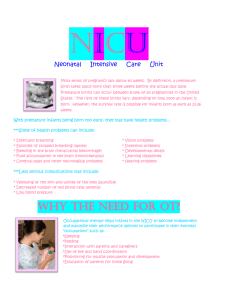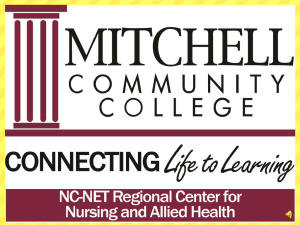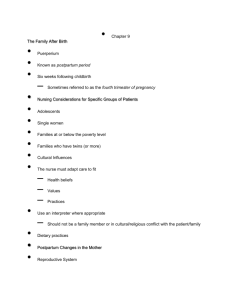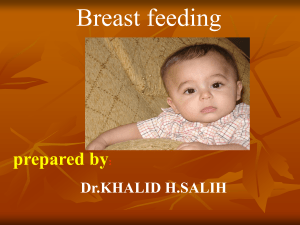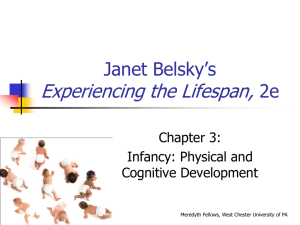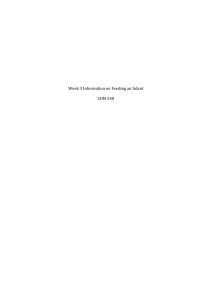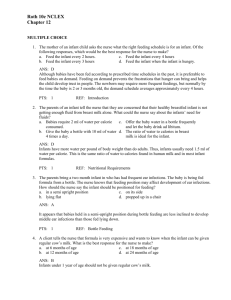CHAPTER 15: FEEDING INFANTS Answers to Review Questions
advertisement
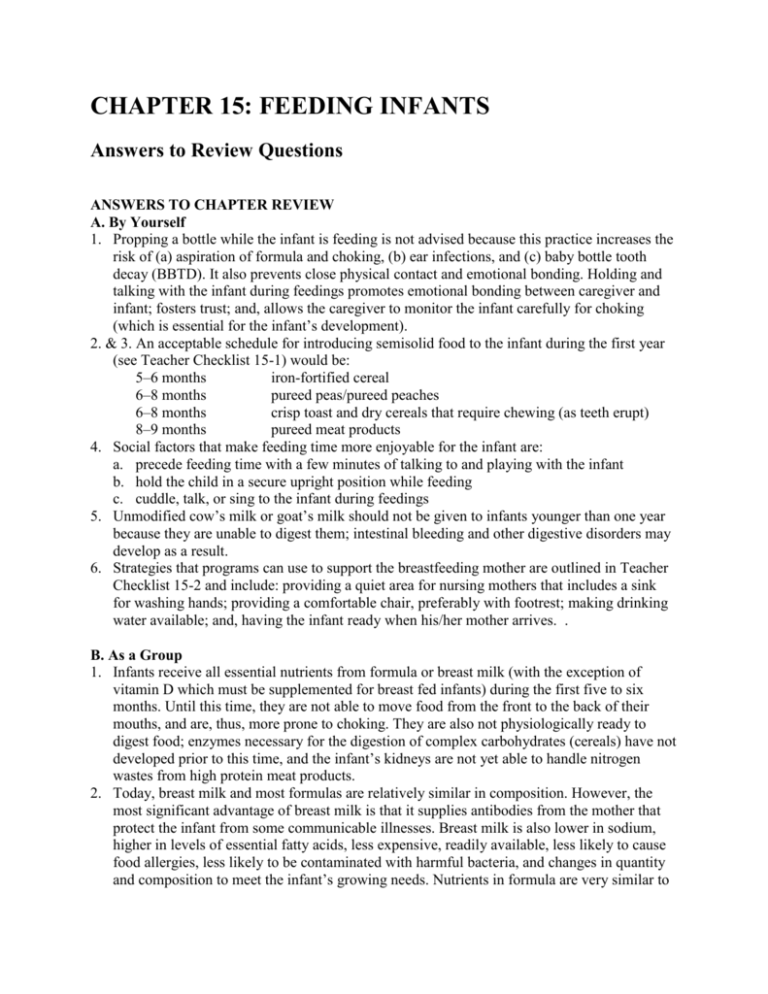
CHAPTER 15: FEEDING INFANTS Answers to Review Questions ANSWERS TO CHAPTER REVIEW A. By Yourself 1. Propping a bottle while the infant is feeding is not advised because this practice increases the risk of (a) aspiration of formula and choking, (b) ear infections, and (c) baby bottle tooth decay (BBTD). It also prevents close physical contact and emotional bonding. Holding and talking with the infant during feedings promotes emotional bonding between caregiver and infant; fosters trust; and, allows the caregiver to monitor the infant carefully for choking (which is essential for the infant’s development). 2. & 3. An acceptable schedule for introducing semisolid food to the infant during the first year (see Teacher Checklist 15-1) would be: 5–6 months iron-fortified cereal 6–8 months pureed peas/pureed peaches 6–8 months crisp toast and dry cereals that require chewing (as teeth erupt) 8–9 months pureed meat products 4. Social factors that make feeding time more enjoyable for the infant are: a. precede feeding time with a few minutes of talking to and playing with the infant b. hold the child in a secure upright position while feeding c. cuddle, talk, or sing to the infant during feedings 5. Unmodified cow’s milk or goat’s milk should not be given to infants younger than one year because they are unable to digest them; intestinal bleeding and other digestive disorders may develop as a result. 6. Strategies that programs can use to support the breastfeeding mother are outlined in Teacher Checklist 15-2 and include: providing a quiet area for nursing mothers that includes a sink for washing hands; providing a comfortable chair, preferably with footrest; making drinking water available; and, having the infant ready when his/her mother arrives. . B. As a Group 1. Infants receive all essential nutrients from formula or breast milk (with the exception of vitamin D which must be supplemented for breast fed infants) during the first five to six months. Until this time, they are not able to move food from the front to the back of their mouths, and are, thus, more prone to choking. They are also not physiologically ready to digest food; enzymes necessary for the digestion of complex carbohydrates (cereals) have not developed prior to this time, and the infant’s kidneys are not yet able to handle nitrogen wastes from high protein meat products. 2. Today, breast milk and most formulas are relatively similar in composition. However, the most significant advantage of breast milk is that it supplies antibodies from the mother that protect the infant from some communicable illnesses. Breast milk is also lower in sodium, higher in levels of essential fatty acids, less expensive, readily available, less likely to cause food allergies, less likely to be contaminated with harmful bacteria, and changes in quantity and composition to meet the infant’s growing needs. Nutrients in formula are very similar to 3. 4. 5. 6. those in breast milk, but do not include the protective antibodies. The advantages of formula feeding are that it provides some freedom for mothers, allows fathers to be more involved in the feeding process, and is a satisfactory substitute when mothers are not able to breastfeed. The disadvantages of breastfeeding include requiring the mother to be available (unless she pumps), paying careful attention to her diet, and reducing the father’s involvement in the feeding process. The disadvantages of formula feeding include the lack of antibodies, additional expense, and precise care necessary in preparing bottles. Feeding practices that may contribute to infant onset obesity are: (a) overfeeding during bottle feeding, (b) too early introduction of solid foods, and (c) failure to be alert to or respond to the infant’s signals of satiety, such as pushing the nipple away or turning the head away from food. Baby bottle tooth decay (BBTD) is caused by allowing infants to feed for prolonged periods of time, such as putting them to bed with a bottle or giving them fruit juice in a bottle to drink at their convenience. Sugars in formula, breast milk, or juices can lead to a high rate of tooth decay when they remain in contact with developing teeth. Infants should be fed in a reasonable amount of time and the bottle or breast removed. The students’ answers will vary based on their findings and feeding criteria. The students’ answers will depend on their observations.
